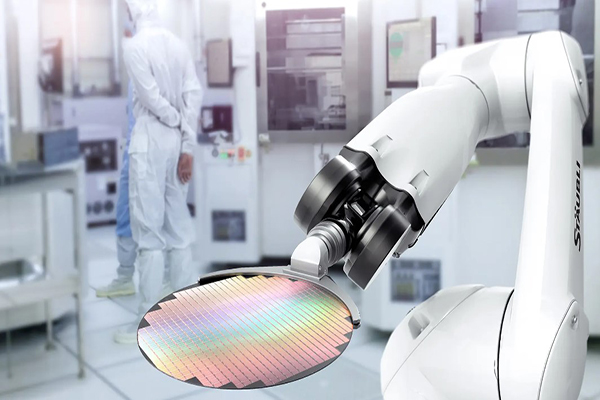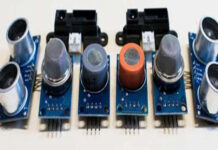In the ever-evolving landscape of technology, the Semiconductor Robot market has emerged as a dynamic and pivotal force, driving innovation across various industries. These robots, equipped with cutting-edge semiconductor technologies, have transcended traditional boundaries, offering unprecedented possibilities in automation, healthcare, manufacturing, and beyond. This article explores the multifaceted dimensions of the Semiconductor Robot market, shedding light on its current status, growth drivers, and the transformative impact it has on diverse sectors.
Current Landscape
The Semiconductor Robot market is experiencing rapid growth, propelled by advancements in semiconductor technologies, artificial intelligence, and robotics. These robots, often powered by sophisticated microprocessors and sensors, play a crucial role in automating tasks that were once deemed too complex or hazardous for human intervention. From manufacturing assembly lines to healthcare procedures, semiconductor robots are finding applications in a myriad of industries, heralding a new era of efficiency and precision.
Key Companies Profiled
- Samsung Electrical
- Intel
- SK Hynix
- Qualcomm
- Broadcom
- Micron
- Texas Instrument
- Microchip
- STmicroelectronics
- NXP Semiconductors
Market Drivers
Several key factors are fueling the growth of the Semiconductor Robot market. One of the primary drivers is the increasing demand for automation across industries. Businesses are actively seeking ways to enhance productivity, reduce operational costs, and improve the quality of products and services. Semiconductor robots, with their ability to perform repetitive tasks with unparalleled precision, are proving to be indispensable in achieving these objectives.
Additionally, the rise of Industry 4.0, characterized by the integration of digital technologies into manufacturing processes, has spurred the adoption of semiconductor robots. These robots are instrumental in creating smart factories where interconnected devices and machines communicate seamlessly, leading to enhanced efficiency and real-time decision-making.
Moreover, the COVID-19 pandemic has accelerated the need for automation in various sectors, as businesses seek resilient and adaptable solutions to navigate disruptions. Semiconductor robots have emerged as a key enabler, facilitating remote operations, ensuring business continuity, and mitigating the impact of labor shortages during lockdowns.
Applications in Manufacturing
The manufacturing sector has witnessed a paradigm shift with the integration of semiconductor robots. These robots excel in tasks such as precision assembly, welding, and quality control. Their ability to operate 24/7 without fatigue ensures continuous production, driving efficiency and reducing time-to-market for products.
Semiconductor robots are also contributing to the evolution of additive manufacturing, commonly known as 3D printing. By integrating sophisticated semiconductor technologies, these robots can precisely deposit layers of material, opening new possibilities in rapid prototyping and customized production.
Healthcare Revolution
In healthcare, semiconductor robots are revolutionizing patient care, surgery, and diagnostics. Surgical robots equipped with advanced semiconductor sensors enable minimally invasive procedures, reducing recovery times and improving patient outcomes. Telepresence robots, powered by semiconductor technologies, facilitate remote consultations and medical assistance, particularly in underserved or remote areas.
The ability of semiconductor robots to handle hazardous materials and environments is proving invaluable, especially in situations such as pandemic response and the handling of infectious diseases. These robots can perform tasks like disinfection, sample collection, and drug dispensing, mitigating risks to human health.
Country-wise Insights
Why the US Market is Projecting High Demand for Semiconductors Robots?
The United States semiconductor robot is projected to expand at a CAGR of 18.2% to reach a valuation of US$ 817.9 million by the end of the forecast period.
The United States is a powerful economy that projects high demand for consumer electronics and has giant data centers to store enormous data which requires semiconductors, to meet the demand the US is investing in semiconductor manufacturing which in turn paves the way for semiconductor robots.
Also, China and US trade wars fueled the demand for semiconductors in the US, which create lucrative growth opportunities for the semiconductors market in the US. Since the semiconductor market in the US is gaining traction, it is estimated to create a plethora of opportunities for the semiconductor robots market over the forecast period.
Challenges and Future Outlook
While the Semiconductor Robot market is poised for continued growth, it faces challenges such as high initial costs, concerns about job displacement, and the need for robust cybersecurity measures. Addressing these challenges will be crucial for the sustained development and acceptance of semiconductor robots across industries.
Looking ahead, the future of the Semiconductor Robot market appears promising. As semiconductor technologies continue to evolve, robots will become more intelligent, versatile, and cost-effective. The integration of edge computing and 5G connectivity will further enhance the capabilities of semiconductor robots, enabling real-time data processing and communication.















